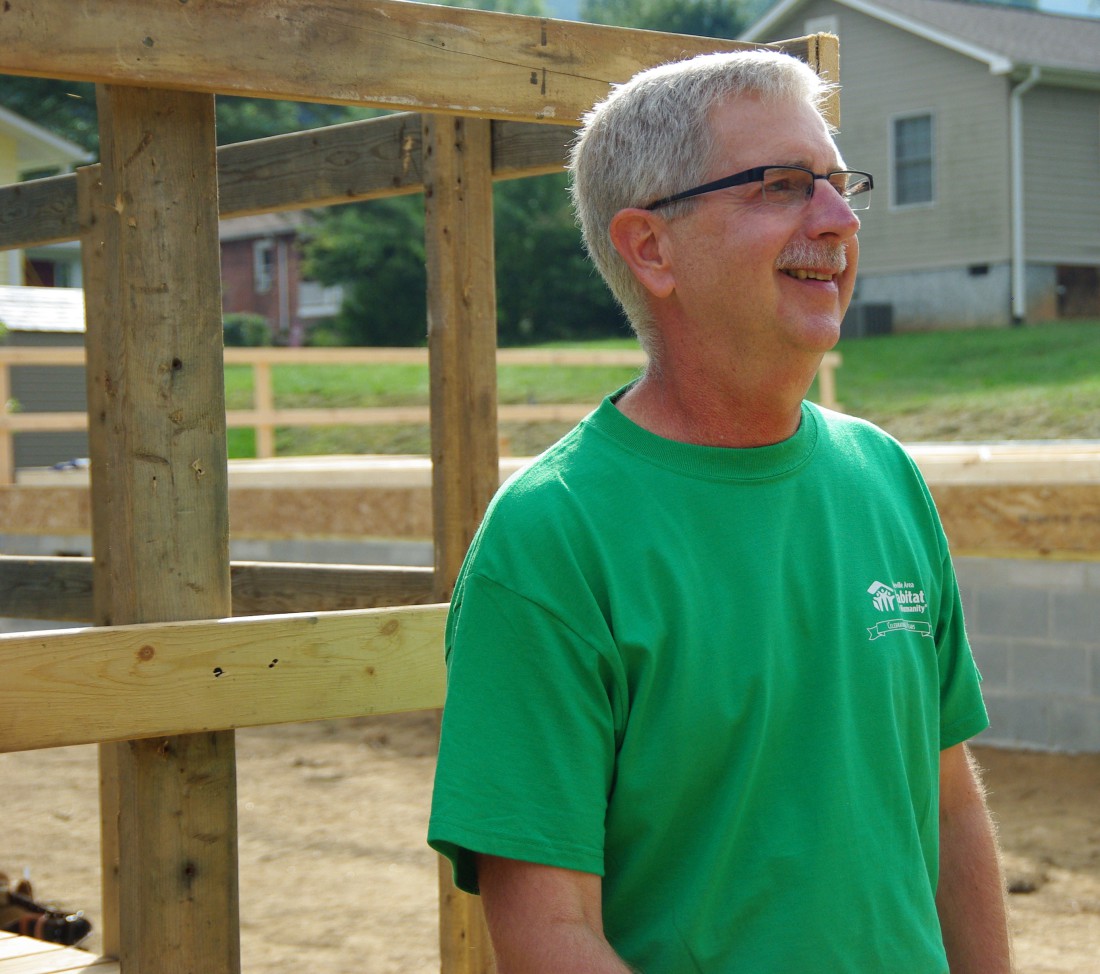Editor’s note: This essay is part of a series in which local experts were asked: “What would it take to solve the Asheville area’s affordable housing problem?”
During an interview years ago, I was asked where I’d like to see Asheville Area Habitat for Humanity in 10 years. My response — “out of business” — surprised the interviewer, but she knew what I meant. If Asheville Habitat were out of business, it would mean that every Buncombe County family lived in a safe, affordable home. Unfortunately, that’s not the case.
We live in an area that thrives on tourism, health care and manufacturing. But with a huge discrepancy between high housing costs and low wages, many people have been priced out of the housing market. Let’s say you work full time in a Living Wage-certified job and have one dependent. That means you make $26,000 a year (about 58 percent of the area’s median income). If you have to pay more than $650 per month for your mortgage or rent, you become “cost-burdened” — your housing costs have made it difficult for you to pay for food, transportation or medical care. But how do you find decent, affordable housing? You could apply for an Asheville Habitat home, because we serve those earning less than 70 percent of the median income, and our mortgage payments are less than average rents. But as with all other affordable housing options in town, the need far outstrips our capacity.
Whenever people ask what we need to create more affordable housing, we say: capital. It takes money to buy and develop land, and to build attractive, energy-efficient homes. Those capital expenditures aren’t temporary Band-Aids: They’re investments in permanent change. Habitat sells homes to qualified applicants (teaching assistants, certified nursing assistants, firefighters, etc.) who put in hundreds of volunteer hours to help build their homes and then pay a zero percent interest, 30-year mortgage that goes right back into our building fund. Those mortgage payments help sustain our work and convert “renters-in-need” into “homeowners helping neighbors.” It’s a great model — and a primary reason Habitat for Humanity International was the sixth-largest homebuilder in the U.S. during the Great Recession.
Buncombe County is home to excellent nonprofit and for-profit builders with decades of expertise in building affordable homes. But neither Habitat nor anyone else is the sole, end-all solution to the affordable housing crisis. It will take nonprofit and for-profit entities and municipalities, all working together, to serve more families in need. And unfortunately, I don’t see Habitat going out of business any time soon.
— Lew Kraus
Executive Director
Asheville Area Habitat for Humanity




What a great, positive model to grow on.
Habitat, a living wage certified company, says it would prefer to not have to even be in business. It builds homes for people who need them, and help them transition into the homes through non-predatory financing. They have a sustainable program that reinvests in itself.
Meanwhile, across town, Mountain Housing Opportunities pens an essay that says “give us more tax payer money!”
Let’s recap: MHO’s executive director makes $100,000 a year (according to MHO’s own tax return) and MHO is not living wage certified.
Every MHO Building is built entirely at 100% taxpayer expense (City + County Housing Trust Funds+selling Tax Credits from the state to private investors).
MHO gets 5 year property tax exemptions for their apartment buildings because of city tax breaks. MHO’s apartments held under the non-profit label don’t pay any property tax.
The rents that MHO collects from its publicly paid for buildings go back into MHO, whereas Habitat’s go back to the Habitat Fund to build more houses.
With a scheme like that, it’s no wonder MHO can afford to fight against Stream Buffer Zone increases and their directors can contribute thousands upon thousands of dollars to local elected officials.
More Habitat, less MHO.
The crisis is one of total housing supply; not enough units. and it is caused by the UDO, with its single family zoning, unit density limits, residential height limits, setbacks, and parking requirements. Reversing the crisis will require the total defeat of all neighborhood activists.